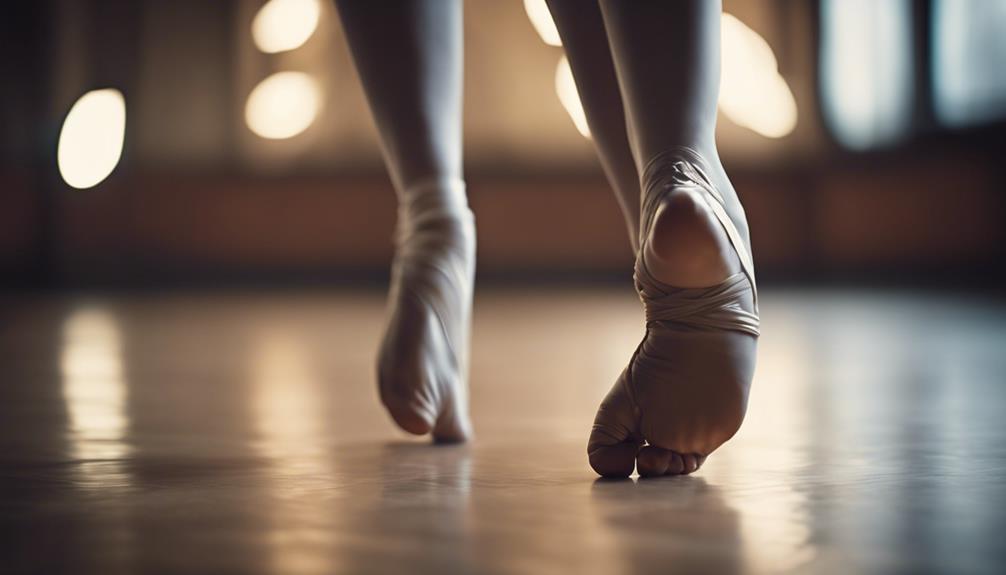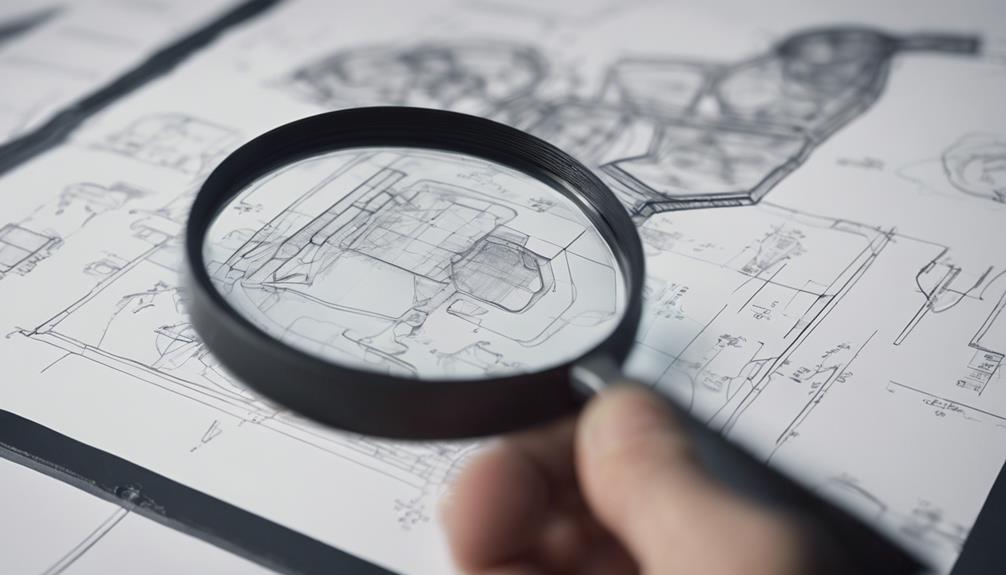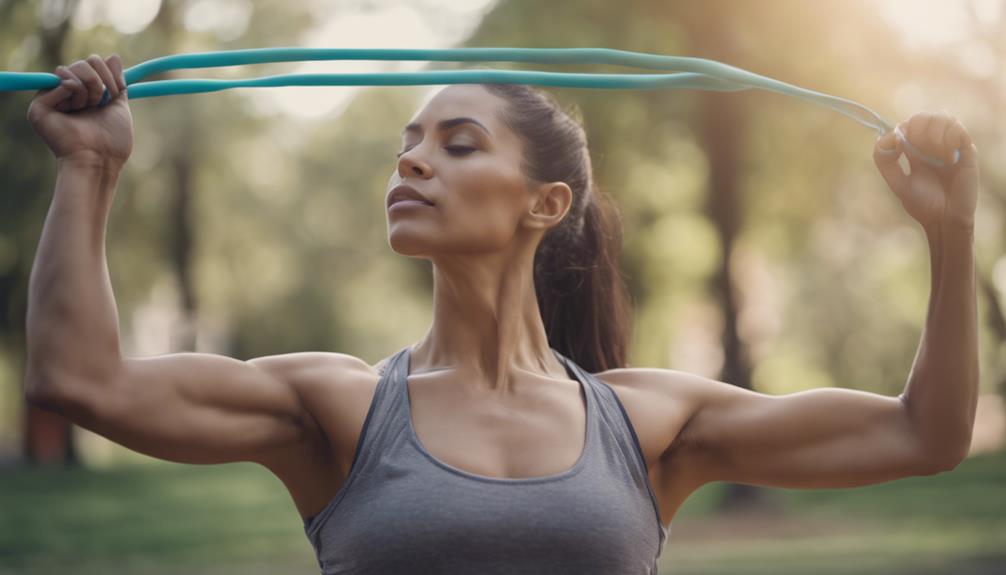If you're new to dance, a sickled foot is when your foot curves in instead of pointing down naturally. This misalignment can lead to ankle instability and injuries during movements. Strengthening your feet, ankles, legs, and glutes is important to correct this. Focusing on hip strength and alignment rather than the ankles can help prevent sickling. Seeking guidance from professionals and practicing self-awareness exercises can make a significant difference in improving foot alignment. Understanding and addressing this terminology is essential for your dance journey!
Key Takeaways
- Sickled foot in dance is when the foot is pointed too far down or too far out.
- It disrupts proper alignment, stability, and can lead to ankle injuries.
- Incorrect ankle positioning affects movement quality and overall performance.
- Strengthening exercises and proper technique can help prevent sickled feet.
- Professional guidance from podiatrists or physical therapists is essential for correction and prevention.
Causes of Sickled Feet
Sickled feet in dancers result from biomechanical imbalances and muscle weaknesses that affect foot alignment and stability. When the ankle joint isn't properly aligned, it can lead to sickling, where the foot curves inward instead of pointing straight. Avoiding sickled feet is pivotal as it destabilizes ankles, increasing the risk of slips, twists, and sprains during dance movements.
This inward curvature of the toes and dropping back of the heel can also make dancers more prone to tendinitis. Sickling commonly occurs during relevé, glides, jumps, and various dance positions. Factors such as poor form and lack of hip strength can contribute to the development of sickled feet.
Correcting sickled feet is fundamental for preventing injuries and maintaining proper foot alignment in dancers. By addressing these biomechanical imbalances and muscle weaknesses, dancers can improve their foot alignment and overall stability while performing various dance movements.
Podiatrists' Treatment Approach
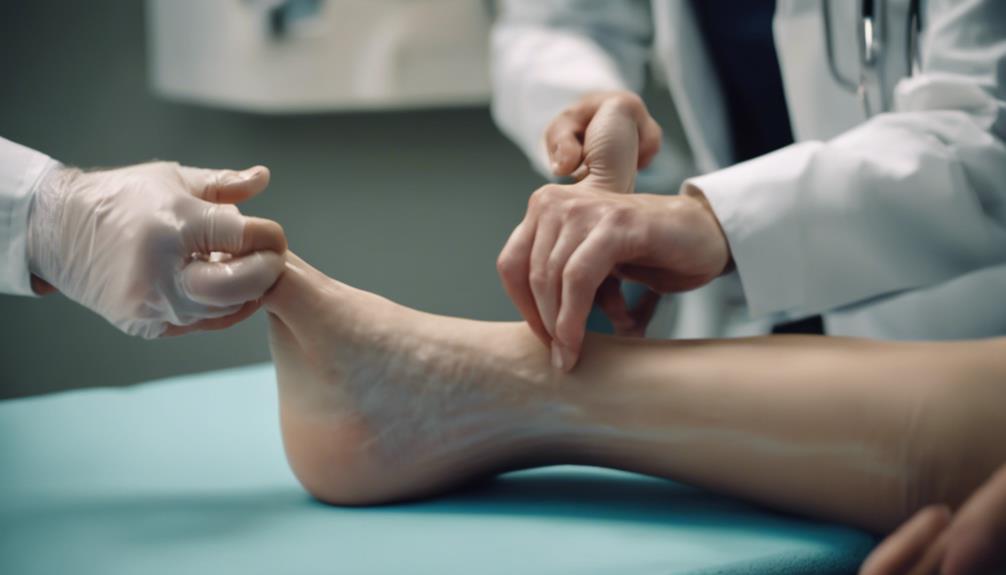
When addressing sickled feet in dancers, podiatrists employ a treatment approach focused on physical rehabilitation and strength building. Podiatrists emphasize the importance of strengthening the feet, ankles, legs, and glutes to correct the issue of sickling.
They recommend targeted strength training exercises to improve the overall stability and alignment of the ankle, which is vital in treating sickled feet. Additionally, podiatrists stress the significance of core strength and endurance training to help prevent injuries associated with this condition.
In some cases, in-house physical rehabilitation specialists may be involved to assist in correcting issues like supination in dancers with sickled feet.
It's essential to address sickled feet promptly as it can help prevent complications such as weakening of the ankle tendons.
At-Home Interventions for Dancers
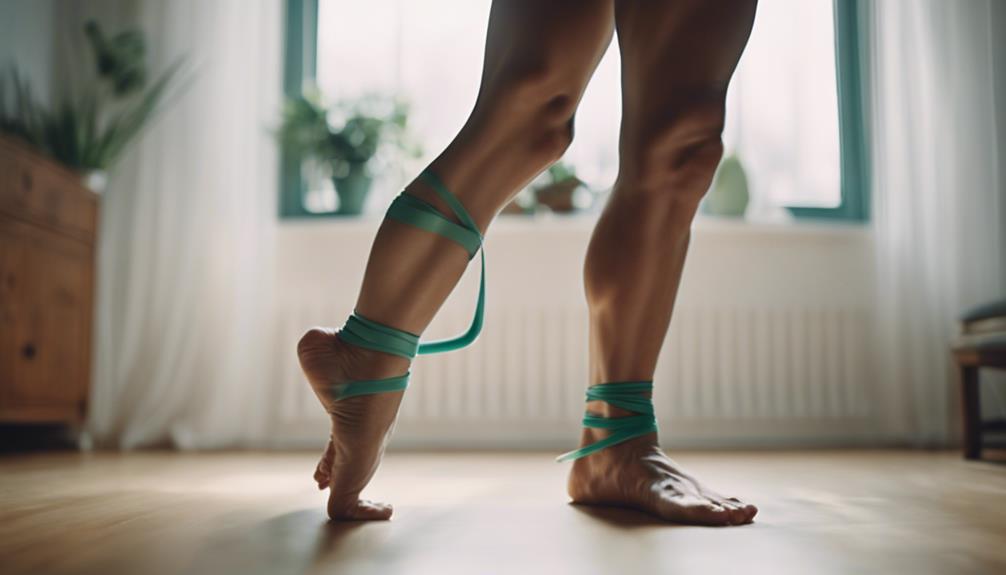
To improve your foot alignment, try a self-awareness exercise to correct supination. Close your eyes and point your toes to check your alignment and increase awareness.
Remember to focus on turning out from your hips, not your ankles, to prevent sickled feet.
Identify Correct Foot Alignment
Start by performing self-awareness exercises to identify and correct any supination in your feet. Check your foot alignment by pointing your toes with your eyes closed to make sure they are properly positioned. When practicing, focus on turning out from the hips rather than the ankles to avoid sickling. By paying attention to these key points, you can prevent potential injuries and strengthen your ankle tendons.
To further aid you in identifying correct foot alignment, use the table below as a reference guide:
| Self-Awareness Exercises | Proper Foot Alignment Tips | Potential Consequences of Incorrect Alignment |
|---|---|---|
| Point toes with eyes closed | Turn out from hips, not ankles | Weakening of ankle tendons |
| Check alignment in the mirror | Engage core for stability | Increased risk of injuries |
| Practice slow tendu exercises | Distribute weight evenly on feet | Decreased balance and control |
| Stretch calf muscles regularly | Wear supportive footwear | Limited range of motion |
Focus on Turnout
Improving turnout at home as a dancer involves focusing on specific exercises to enhance hip strength and flexibility. Proper alignment is essential to avoid sickling, which can strain the ankles and cause instability.
To develop a strong turnout, you can start with simple exercises like clamshells, side-lying leg lifts, and hip rotations. These movements target the hip muscles, aiding in better turnout control and stability.
When working on turnout, remember to engage your core muscles to support your back and pelvis, maintaining proper alignment throughout the exercises. As you progress, incorporating resistance bands or ankle weights can provide added challenge and further enhance hip strength.
Additionally, stretching exercises like seated straddle stretches and frog stretches can help improve flexibility in the hips, allowing for a more extensive range of motion during turnout movements.
Seek Professional Guidance
Seeking professional guidance is essential for dancers looking to address and correct issues related to sickled feet effectively at home. When dealing with sickled feet, turning to expert advice can make a significant difference in your progress.
Here are some key reasons why seeking professional guidance is important:
- Personalized Interventions: Professionals can provide tailored interventions that specifically address your individual needs and challenges.
- Specialized Recommendations: Podiatrists, for example, can recommend precise exercises and techniques to target and correct sickling problems.
- Prevent Complications: Working with a professional can't only help you improve but also prevent further complications by ensuring proper foot alignment.
Preventing Sickled Feet in Ballet

To prevent sickled feet in ballet, focus on correcting your foot alignment and strengthening your hip muscles. These two aspects are essential in maintaining proper form and avoiding the risk of sickling.
Your teachers will stress the importance of these points to help you dance with correct foot positioning.
Correcting Foot Alignment
Ensuring proper foot alignment in ballet involves aligning your toes in a straight line from the calf muscle to prevent sickling.
To correct foot alignment and prevent sickled feet, focus on the following:
- Muscle Memory: Training consistently reinforces the correct alignment, helping your body remember to keep the toes pointed and aligned with the ankle bone.
- Ankle Bone Alignment: Positioning the big toe in line with the ankle bone is pivotal to avoid sickling and maintain a clean line in your footwork.
- Strengthening Exercises: Building strength, flexibility, and balance in your feet and ankles through targeted exercises enhances your ability to maintain proper foot alignment during various ballet movements.
Importance of Hip Strength
Strong hip muscles play a crucial role in maintaining proper turnout and foot alignment to prevent sickled feet in ballet. Hip strength is essential for supporting the body's weight and ensuring stability during dance movements.
When hip muscles are weak, compensatory movements in the feet can occur, increasing the likelihood of sickling. By developing adequate hip strength, dancers can have better control over the positioning of their legs and feet, thereby reducing the risk of sickled feet.
Engaging in targeted exercises to strengthen the hips not only enhances overall dance performance but also helps prevent injuries associated with sickling. Remember, strong hips lead to better turnout and foot alignment, allowing you to dance with precision and grace while minimizing the risk of developing sickled feet through compensatory movements.
Prioritize hip strength training to elevate your ballet technique and protect your feet from improper alignment.
Importance of Protecting Dancers' Feet
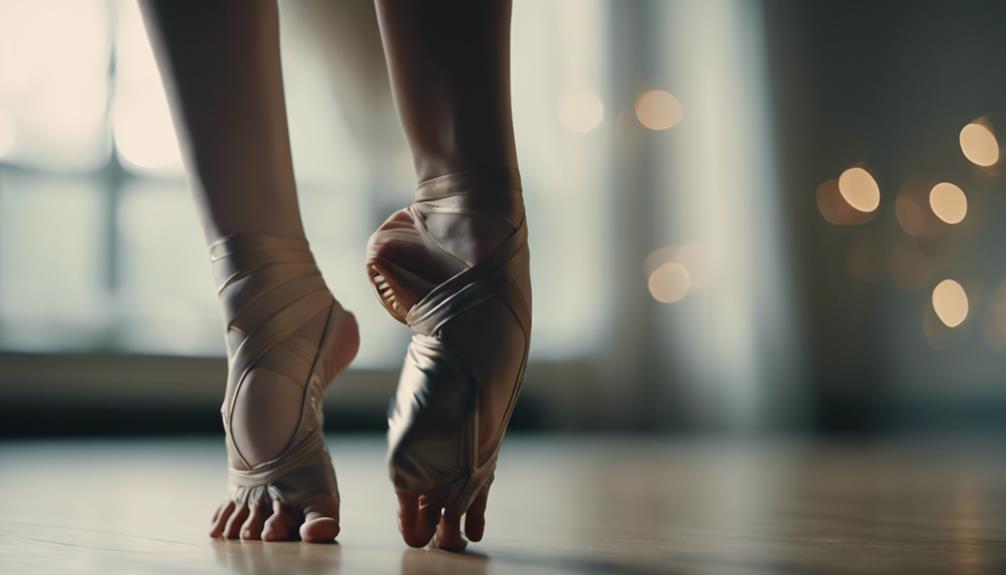
Protecting dancers' feet is vital to safeguard their well-being and longevity in the dance industry. When dancers sickle their feet, it not only affects their performance but also puts them at a higher risk of injuries that can hinder their career progression.
To guarantee dancers' feet are properly cared for, seeking the expertise of a physical therapist is essential. Here are some important points to keep in mind:
- Timely Intervention: Seeking help promptly can prevent further complications and ensure a dancer's overall well-being.
- Specialized Treatments: Tendinitis treatments and in-house x-rays are available to address foot issues related to sickled feet effectively.
- Rehabilitation Options: Athletic physical rehabilitation and MLS laser treatments can aid in the recovery process, helping dancers return to performing swiftly.
Understanding Sickling in Ballet

What's the significance of understanding sickling in ballet?
Sickling, which involves inwardly turning the foot during dance movements, is an essential concept for ballet dancers to grasp. Not only does sickling impact the visual appeal of a performance, but it can also result in instability, affecting a dancer's technique and overall form.
Proper pointe shoe selection plays a critical role in preventing and correcting sickling among ballet dancers. By choosing the right pointe shoes, dancers can maintain proper alignment and avoid the pitfalls associated with sickling.
In classical ballet, sickling is strongly discouraged due to its detrimental effects on form and technique.
To effectively address sickling in ballet, differentiating between pointing and pronating is vital. Understanding the nuances of these movements is key to recognizing and correcting issues related to sickled feet in ballet dancers.
Addressing Foot Issues Related to Sickling
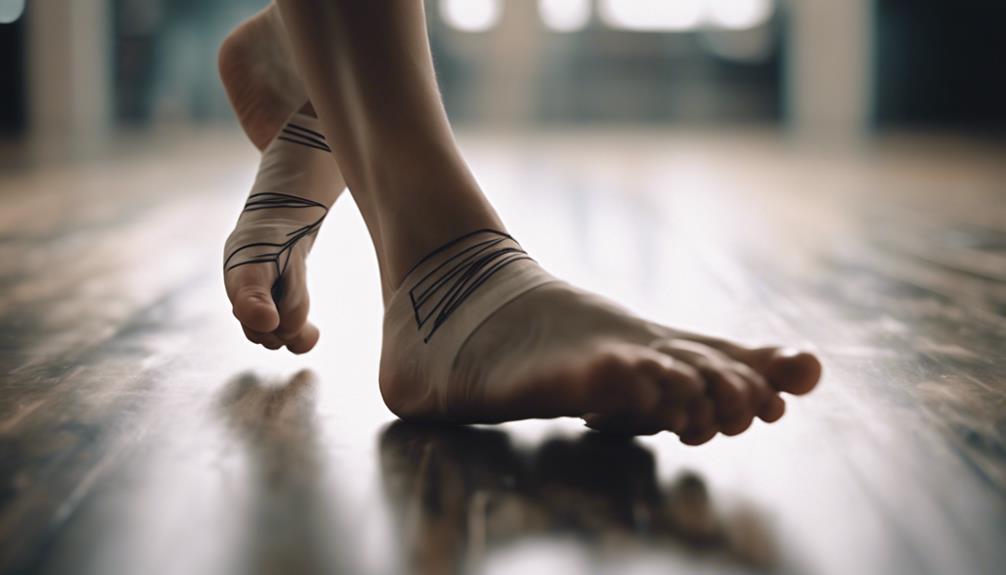
To address foot issues related to sickling in ballet, consider the impact of compressible feet, knuckling, and bunions on dancers' foot health.
Properly fitted pointe shoes can alleviate foot issues related to sickling, providing support and comfort.
Educating yourself on managing foot conditions from sickling can help prevent long-term damage.
Consider Grishko pointe shoe models for customized fitting solutions to address foot issues.
When dealing with foot health concerns stemming from sickling, it's essential to prioritize the proper care and support of your feet. Investing in well-fitted pointe shoes is vital to mitigating the effects of sickling and ensuring best foot health.
By staying informed and seeking professional advice for personalized fitting recommendations, you can actively work towards enhancing both your comfort and performance as a dancer.
Frequently Asked Questions
What Do Sickled Feet Mean in Dancing?
In dancing, sickled feet mean incorrect foot positioning with toes pointing inward and heels dropping back. This can lead to weak ankles and increased injury risk. Proper alignment is essential for stability and injury prevention in dance.
What Is the Difference Between Sickled and Non Sickled Feet?
When you dance, imagine sickled feet like a banana bend, risking ankle woes and strain. Non-sickled? Picture a straight line, no fuss. Strong ankles, less pain. Train right; avoid those sickled feet, and dance on!
What Causes Sickled Feet?
Weak hip muscles, poor form, and genetics can cause sickled feet in dancers. Sickling inwardly curves toes and drops heels, destabilizing ankles and leading to slips and sprains. Avoid this to improve performance and prevent injuries.
What Is the Difference Between Winged and Sickled Foot?
To distinguish between a winged and a sickled foot in dance, remember this: one collapses like a sad balloon arch, the other points inward like a shy turtle's head. Each has its risks.
Conclusion
So there you have it – sickled feet are the bane of every dancer's existence!
Remember, if you want to avoid the dreaded sickling, listen to your podiatrist, do those at-home interventions, and always watch those feet in ballet class.
Your dancing career depends on it! Stay on your toes, literally, and keep those feet happy and healthy.
Dance on, my friends!

